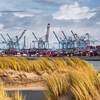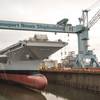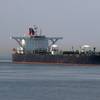New Harbor Tugs Delivered to Eastland Group in New Zealand
Eastland Group has taken delivery of two new harbor tugs, Maki and Ika Nui, for operations in Tairāwhiti (Gisborne), New Zealand.
The 21.4-meter-long, 273 GT newbuilds are RAmparts 2100-CL tugs designed by Canada's Robert Allan Ltd. and constructed at Cheoy Lee Shipyards in China. Each vessel has a 11-meter beam (molded), 4.4-meter depth (least molded) and maximum navigational draft of 4.5 meters.
The Maki (orca) and Ika Nui (big fish) names were announced in the summer of 2021 after suggestions from the public. Eastland Group operates in Gisborne on the North Island, the easternmost commercial port in New Zealand. Nearly 3 million tonnes of logs pass through the port each year.
Propulsion setup on each vessel consists of two Caterpillar 3512C main diesels delivering 1,500 kW at 1,600 rpm, paired with two Schottel SRP 360 FP Z-drives. At sea trials, the vessels achieved 50.5 tonnes bollard pull ahead and 12.4 knots free running speeds ahead.
Main tank capacities are 41 cubic meters for fuel oil and 5 cubic meters for potable water.
The tugs were designed and constructed to the following LR notation: ✠100A1 Tug, *IWS New Zealand Coastal Service, ✠LMC, UMS Notation.
The harbor tugs are equipped with deck machinery including a bow winch from MacGregor. Ship-handling fenders at the bow consist of an upper row of cylindrical fenders and a lower course of W-fender. Sheer fendering consists of "D" rubbers and "W" block type fendering at the stern.
The accommodations have been outfitted to a high standard for an operating crew of five. The deckhouse contains an entrance lobby, the galley, mess, two officer cabins and a public WC. There is also a provision store and laundry in the lower deck. The wheelhouse is designed with a single split control station which provides maximum all-round visibility with exceptional visibility to the bow and side fendering, as well as operation on the aft deck. The engine room features an acoustically isolated switchboard room.
Records taken during sea trial show none of the crew cabins have noise level higher than 65 dB(A). This means the extremely quiet boat will provide comfortable working and living environment for its crew.












